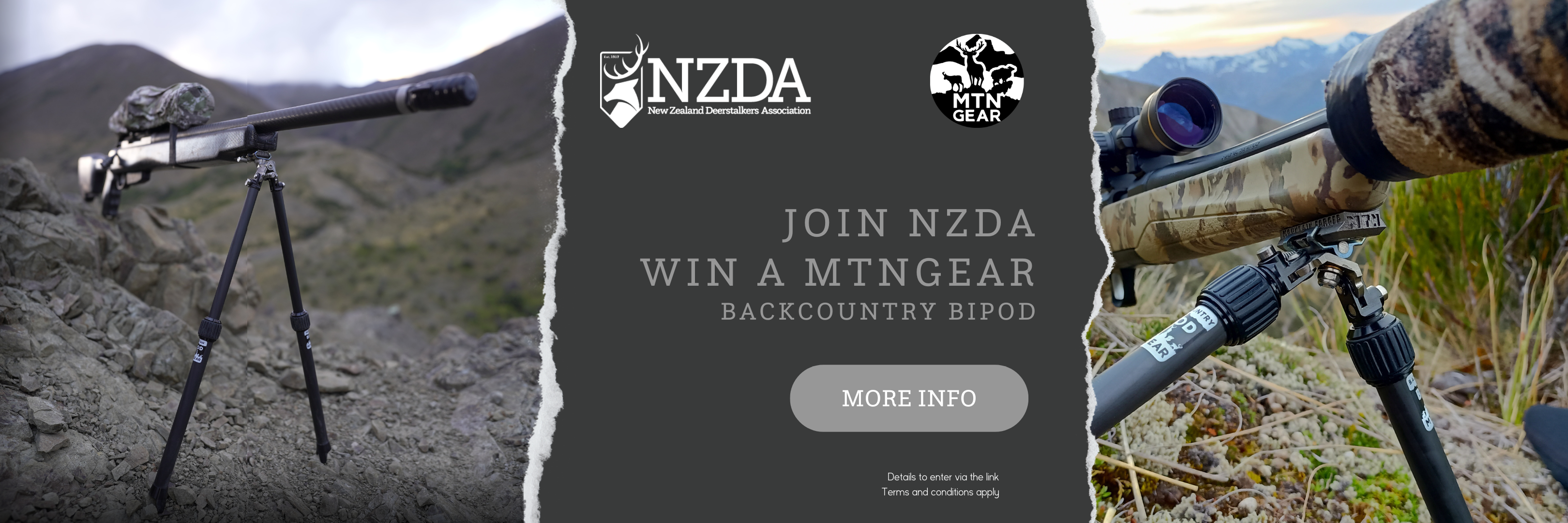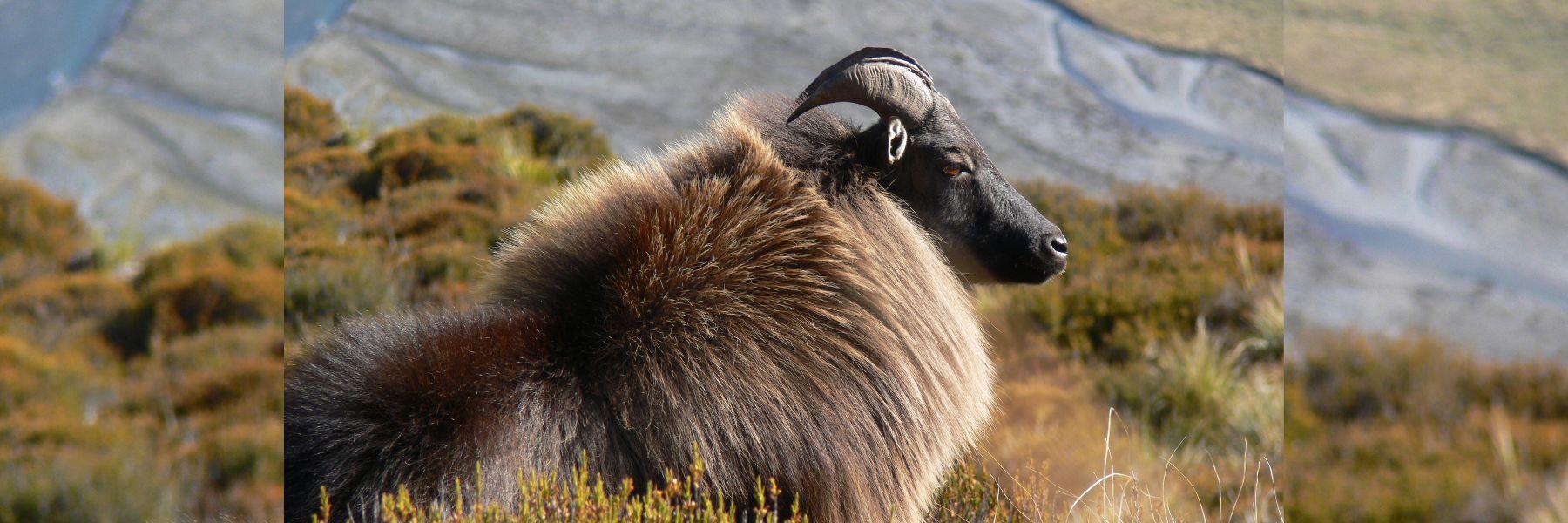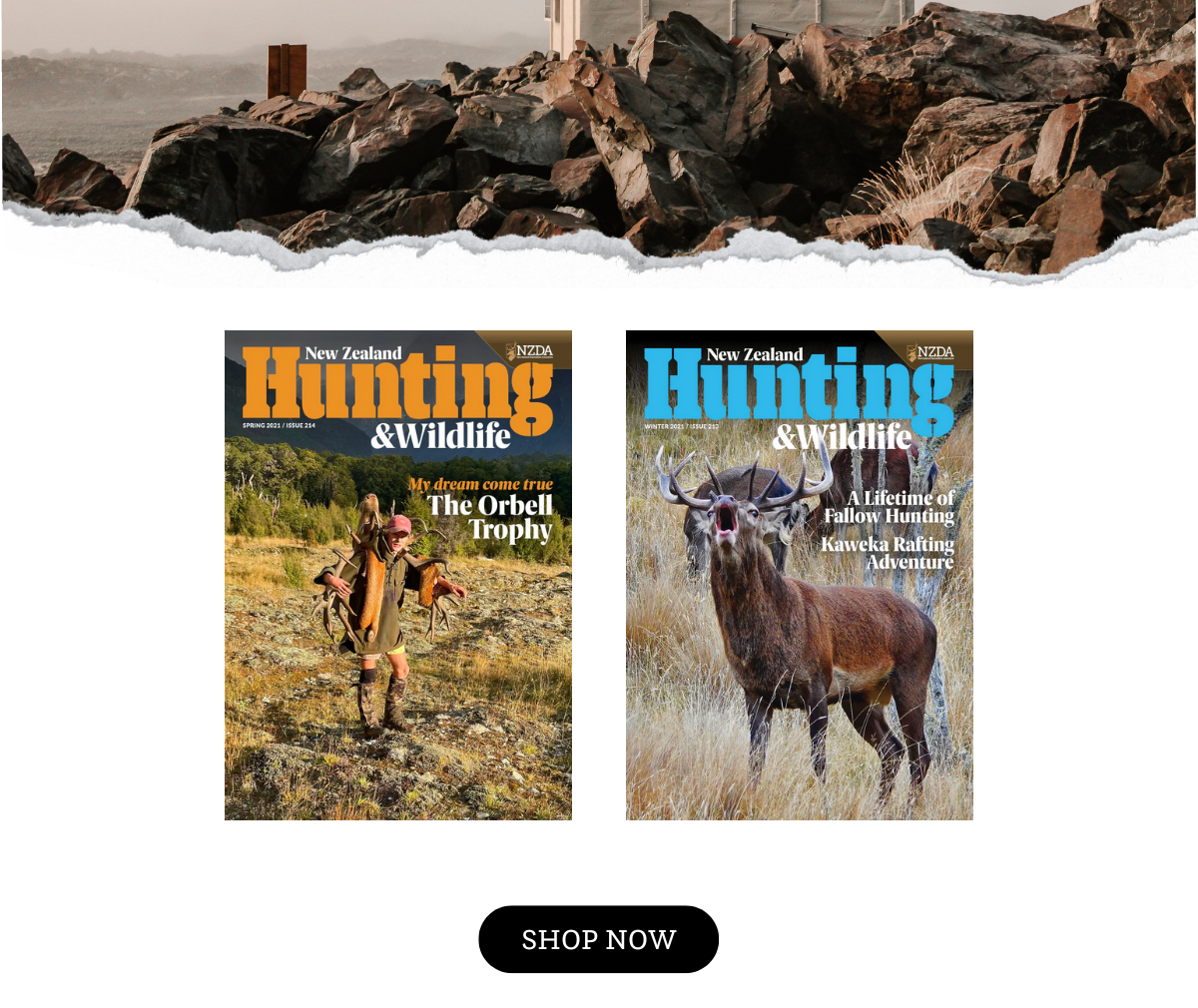Where are we heading?
1 March 2023
Hunting and Wildlife Magazine - Issue 218 Spring
Words By: Marcus Pinney
Photo credit: Darryl Busbridge.
Last year the Department of Conservation has once again by way of culling removed large numbers of female and juvenile tahr. At the halfway point the number was 3500 so they could be on track to remove in the vicinity of 7000 animals. Clearly our tahr herd has for quite some time been well above the 10 000 level that was stipulated in the 1993 Himalayan Tahr Control Plan (HTCP). Prior to Covid, analysis of NZ export records found we were exporting around 1100 tahr trophies annually. While it is fair to say that probably half these animals would have come from private land, the 10,000 limit in the HTCP includes private land too. It seems probable that NZ recreational hunters would have been removing a similar number of bulls annually to that being exported suggesting a total annual harvest approaching 2000 bulls pre-covid. So what resource are we left with if DOC reach the intervention densities stipulated in the HTCP? Modelling of game herds indicates that a population of 10 000 tahr across all land tenures would only produce around 200 6-year-old plus trophy bulls annually. A mere 10% of the pre-covid harvest.
King of the mountains but for how long? Photo credit: Darryl Busbridge.
So what does 10 000 tahr look like in the landscape? Recently I took part in the NZ Tahr Foundation Targeted Harvest trial in Management unit 6. We removed 182 adult female tahr from a 3 square km area. Obviously a very high concentration. So yes, there were far too many tahr in this area and the vegetation was struggling to cope in this small area. However the intervention density for management unit 6 is 1 ½ tahr per square km. So that if the head of the valley is 10 square km according to the HTCP there should only be 15 tahr there… this is a balloted hunting area… you wouldn’t have much of a tahr ballot if the numbers get down to what the plan sets out.
With the Department under pressure to bring the population down to 10 000 as set in the HTCP how will that effect our hunting opportunities? Yes, we have a bit of a residual bull tahr population born when female numbers were higher, but that will only last so long. Hunting guides and AATH operators will be in full swing in 2023 and it is likely conflicts will be greater than previously. With less animals around AATH operators will be flying longer and further to get their animals, potentially upsetting a greater number of hunters and other recreationalists. How many bulls will the commercial sector reasonably be able to take? And how many should be there for the recreational sector? And what allocation should be there for the growing number of foreign freedom hunters?
Certainly, the tahr hunting opportunities we have had for the last two decades are not going to be the same going forward. The reality is, we are all going to have to think more carefully about what animals we harvest going forward. If we want a meat animal, please take a female and not a young bull. Hunters looking for a bull now need to think a bit more about how old the bull they harvest is if we have any hope of trophy resource in the future. There will also not be enough tahr to go around to support hunters shooting multiple bulls each trip, in fact, the expectation of shooting a tahr every trip will undoubtably become unreasonable. The guided hunting sector will have no choice but to do less tahr hunts, for some guides tahr hunting constitutes a significant portion of their business. On top of this we are letting foreign freedom hunters come here and take our game animals without financially contributing. In the post covid era and the country haemorrhaging money like never before, if the powers that be continue down this path, there must be a serious lack of common sense.
The culling of bulls from our National Parks is a tragic waste of a historically valuable resource. In Mt Cook / Aoraki National Park there is more history of tahr and tahr hunting than anywhere else in the country, the liberation site and where the first tahr were shot under licence. Tahr were present in both Mount Cook and Westland National Parks before the parks were gazetted. Department of Conservation policies restricting aerial access from large parts of the tahr range like our National Parks has been a complete failure for conservation values. The taxpayer is left with a massive aerial control bill when the job could be largely done by recreational hunters and boost local economies. Going forward, we need to see the GAC take a greater role on making decisions, rather than DOC who appear to be completely out of their depth in hunting related matters.
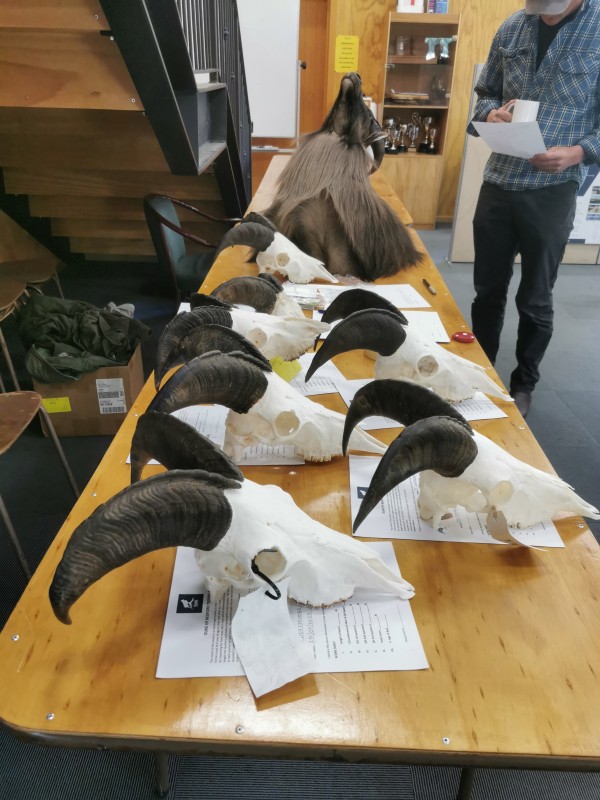
‘Duke of Bedford’ class bull tahr on display at the Tahr Foundation AGM. We are at the crossroad with the future of tahr management with heads like this likely to become far fewer and harder to obtain.
We are coming to a crossroad with the future of tahr management / control. Department of Conservation, GAC, the hunting sector, and other interested parties are going to have to make decisions as to how we move forward. Is it worth continuing with the HTCP which the current limit of 10 000 does not allow a huntable population. Should the plan be fully reviewed or replaced with a Herd of Special Interest (HOSI). Whatever plan we go with, a numbers-based plan is not practical and future plans should be effects based. To have healthy animals we need healthy vegetation. Let’s hope we can work together and resolve our tahr issues rather than go through another boom / bust cycle and once again struggle to find good tahr like in years gone-by.
Marcus Pinney
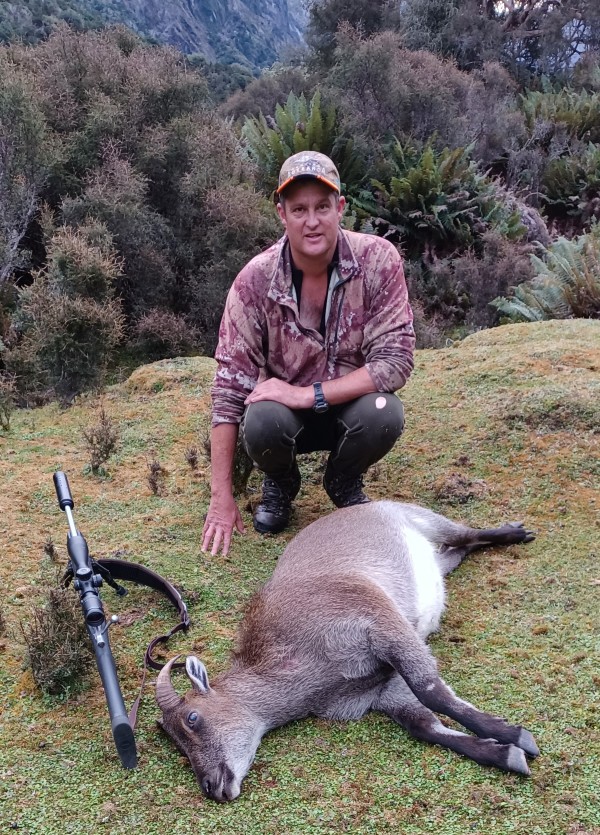
Marcus Pinney has hunted tahr extensively and is passionate about tahr management and maximising the use of the great resource that we are so fortunate to have here in New Zealand.
Marcus Pinney is a deer farmer and retired hunting guide based in South Westland. He has hunted tahr extensively and is passionate about tahr management and maximising the use of the great resource that we are so fortunate to have here in New Zealand.
Marcus has represented Safari Club International NZ chapter, The New Zealand Professional Hunting Guides Association, and the New Zealand Tahr Foundation on the Tahr Liaison Group, helping Department of Conservation to make better decisions regarding tahr management / control. He co – authored The Himalayan Tahr with the late D. Bruce Banwell. Bruce enlisted Marcus to compete the “New Zealand Big Game Records series.”
Marcus’s wife Kaylyn Pinney is the current Chair of the NZ Tahr Foundation, as NZDA Members they are great advocates for Himalayan tahr and we appreciate all the work they have put in for our benefit.
Write for Hunting and Wildlife
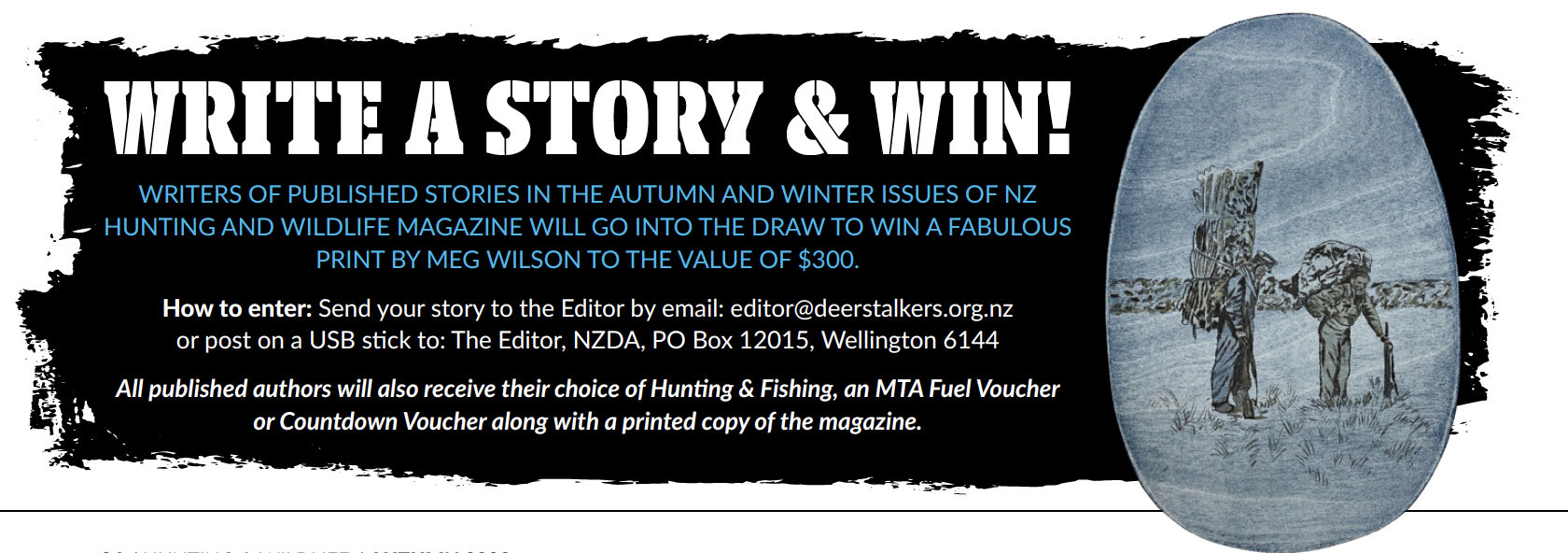
Join NZDA To Help Us Advocate on Your Behalf
